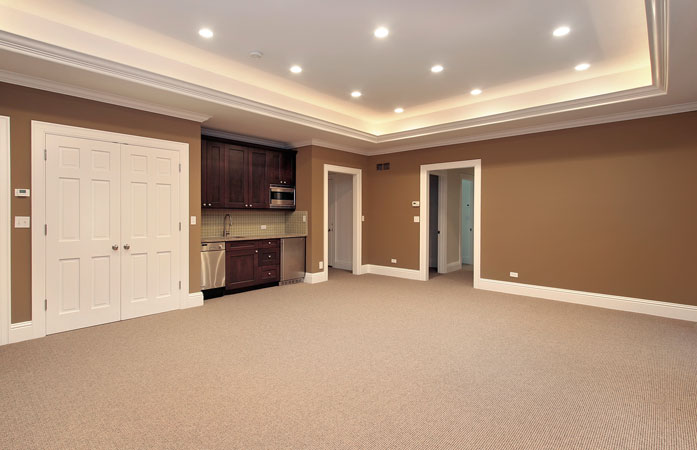Everybody who owns a home with an incomplete basement dreams of finishing it. This is an entire floor’s space which can be easily converted into any type of room based on your needs.
But, finishing a basement is not a cheap proposition. There are some unique challenges you will encounter with regards to configuration and finishes. Basements also house plumbing, wiring, utilities, etc. They’re prone to water accidents and moisture. All of this need to be accounted for during a basement remodel. Any incorrect choices here could spell disaster.
Here are a few common mistakes you should try to avoid:
Finishing a damp or wet basement
Basements are prone to floods and moisture at all times.
When the ground around your basement is saturated with water, it will constantly push against the foundation. This water is going to find a way into your basement eventually. What makes matters even worse is that basements can get flooded due to broken water tanks, plumbing leaks, etc. With the proper drainage and proper dehumidification, your basement will never be dry enough for you to finish.
Drywall, fiberglass insulation and wood studs
These materials work well for rooms above ground but in a basement, they are a recipe for disaster. Basements are humid and have a habit of absorbing moisture. They are made from organic compounds like paper, wood, etc. When moisture is combined with organic matter, the conditions are ripe for the development of mold. Basement walls should be completed using waterproof and inorganic materials which will survive water accidents or basement floods.
Hardwood or wooden subfloors, cork, bamboo
Anything which is made from organic materials will spell trouble for a basement. Manufacturers may claim that their products are mold resistant or chemically treated. Some of them may say their products have a barrier of vapor which is raised from the floor and keeps the wood from soaking up all the moisture around. But none of them are going to survive a flood, caused by something like a plumbing leak. Look for flooring solutions which are engineered to withstand any moisture conditions.
Poor use of vapor barriers
A lot of contractors will say that attaching poly sheets on the walls and floor can help you get any finish you want since the vapor barrier will protect these materials. Some will suggest you place these barriers over fiberglass or studs and then use some drywall. The correct thing to do, however, would be to let the moisture dry and evaporate. A vapor barrier like this will do just one thing, trap water between the barrier and concrete, where it will condense, and mold will start growing.


